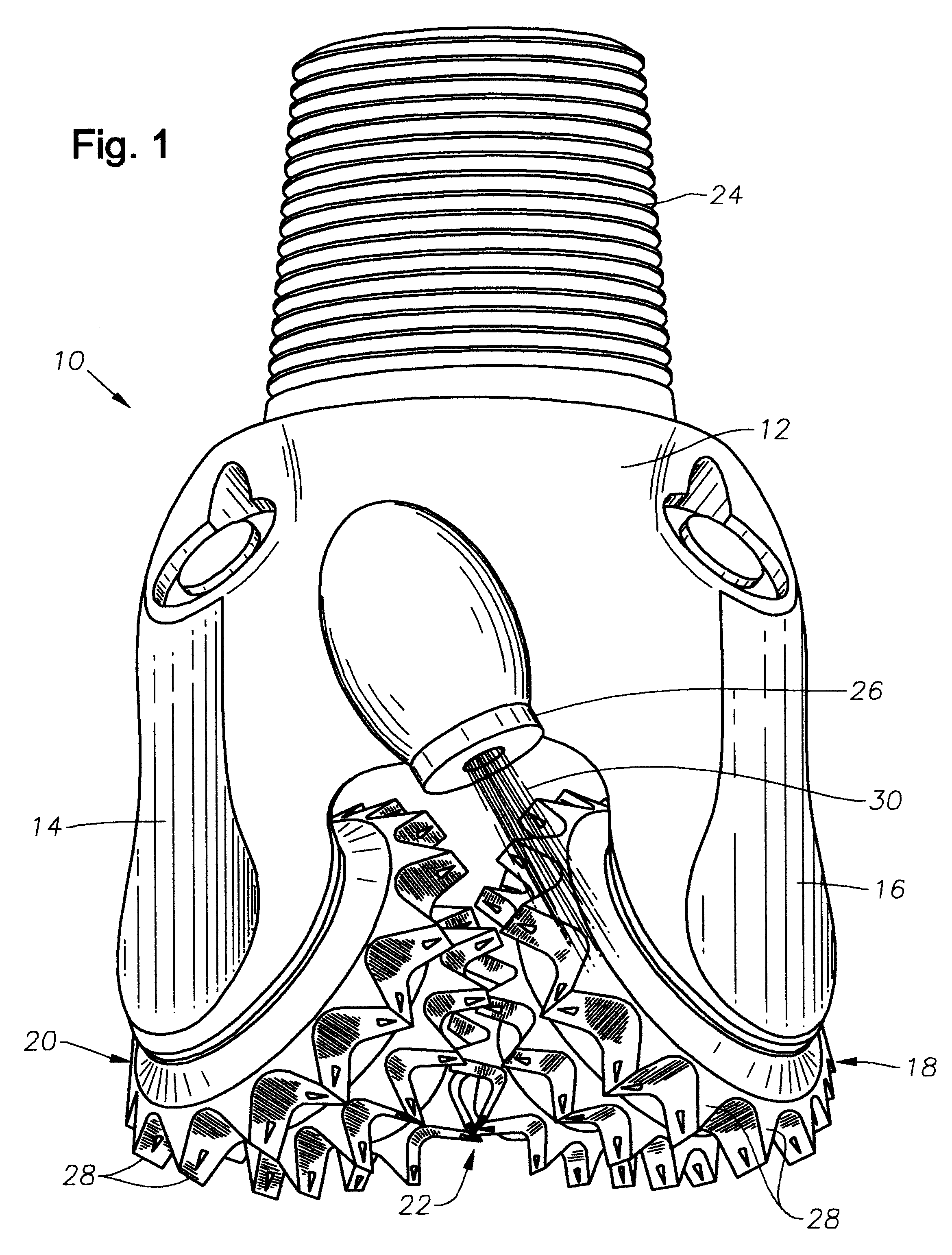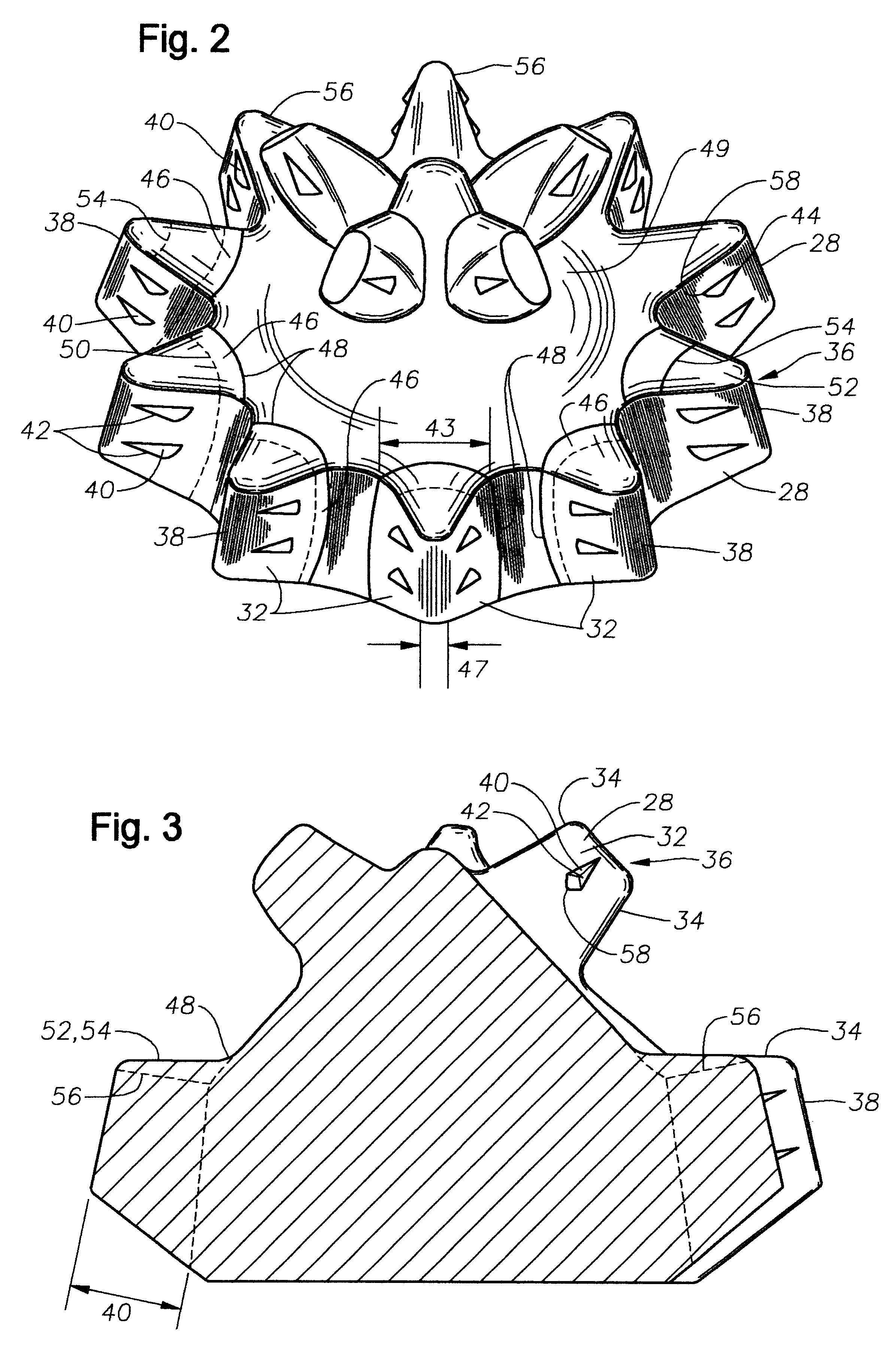Tooth type drill bit with secondary cutting elements and stress reducing tooth geometry
a drill bit and cutting element technology, applied in drill bits, earth drilling and mining, cutting machines, etc., can solve the problems of limited drilling applications of tooth type drill bits, limited drilling speed of bit bits, and rapid wear and/or breakage of teeth
- Summary
- Abstract
- Description
- Claims
- Application Information
AI Technical Summary
Problems solved by technology
Method used
Image
Examples
Embodiment Construction
A typical tooth type bit is shown as numeral 10 of FIG. 1. Typically, tooth bits have a body 12 with three legs 14, 16 (only two are shown). Upon each leg is mounted a rolling cutter 18, 20, 22. During operation, the bit 10 is secured to drill pipe (not shown) by threads 24. The drill pipe is rotated at the surface and drilling fluid is pumped to the bit 10 and exits through one or more nozzles 26. The weight of the drilling string forces the cutting teeth 28 of the cutters 18, 20, 22 into the earth, and, as the bit 10 is rotated, the earth causes the cutters 18, 20, 22 to rotate upon the legs 14, 16 effecting a drilling action. The drilling fluid 30 exiting the nozzles 26 flush away the earth removed by the cutters 18, 20, 22 and can remove cuttings which often adhere to the cutters 18, 20, 22.
As shown in FIGS. 1-3 the teeth 28 are generally wedge shaped with a pair of relatively flat flanks 32 and a pair of curved end surfaces 34. The two flanks 32 are joined at the top 36 of the ...
PUM
 Login to View More
Login to View More Abstract
Description
Claims
Application Information
 Login to View More
Login to View More - R&D
- Intellectual Property
- Life Sciences
- Materials
- Tech Scout
- Unparalleled Data Quality
- Higher Quality Content
- 60% Fewer Hallucinations
Browse by: Latest US Patents, China's latest patents, Technical Efficacy Thesaurus, Application Domain, Technology Topic, Popular Technical Reports.
© 2025 PatSnap. All rights reserved.Legal|Privacy policy|Modern Slavery Act Transparency Statement|Sitemap|About US| Contact US: help@patsnap.com



